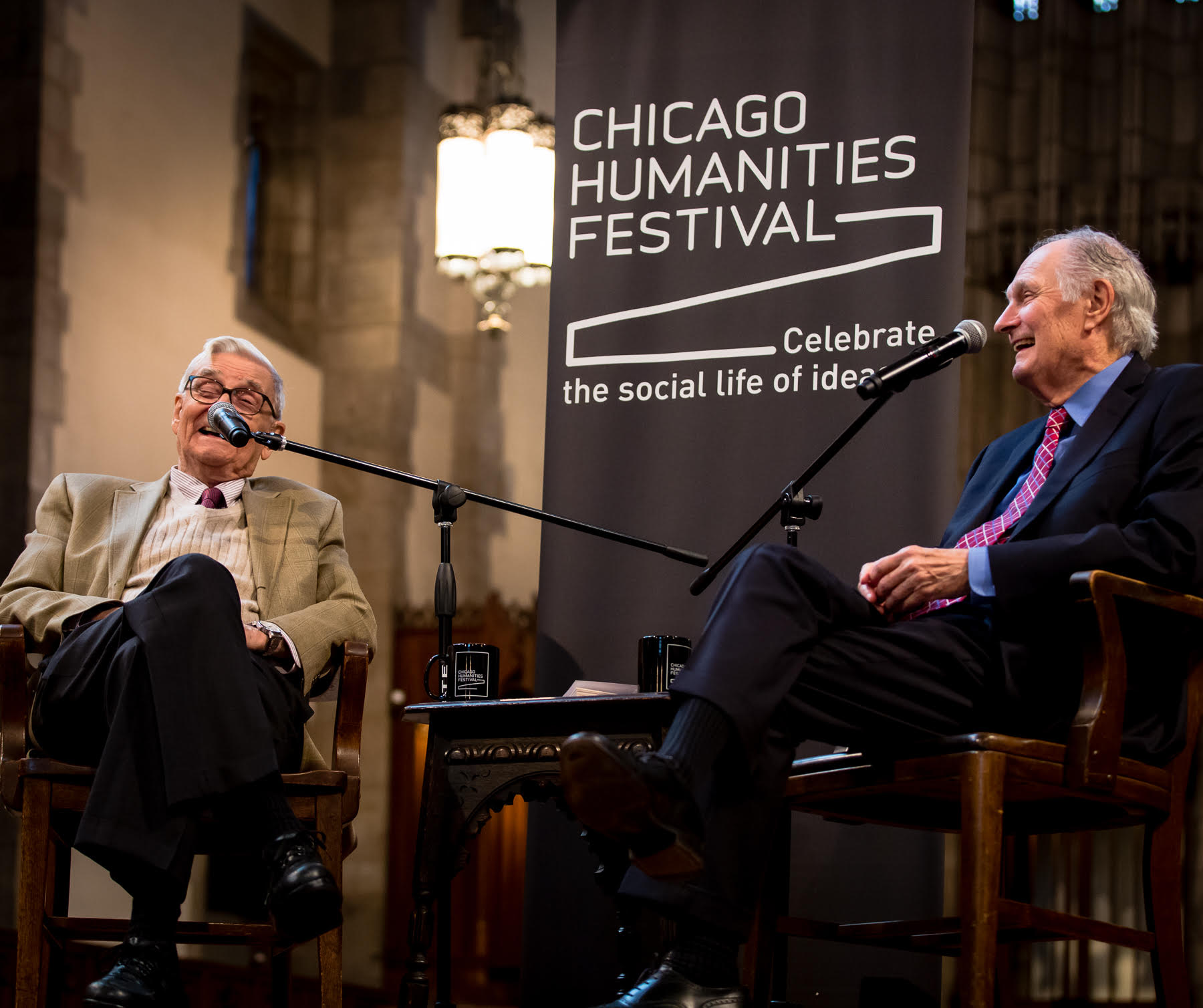What happens when MASH’s Hawkeye Pierce interviews one of the world’s foremost experts on biology, ecology, and human nature?
A packed crowd at Rockefeller Memorial Chapel found out this weekend when actor Alan Alda, an outspoken advocate for making science accessible to the masses, sat down with scientist and ant expert E.O. Wilson (also known as the "father of biodiversity") for the Chicago Humanities Festival.
The two had a thoughtful discussion on empathy, human creativity, and the relationship between the arts and sciences, while also touching on the speakers' latest books, The Origins of Creativity (Wilson) and If I Understood You, Would I Have This Look on my Face? (Alda).
Here are some key themes that emerged.
On human nature developing around the campfire
Alan Alda: The campfire was the place that drew them. Maybe it was just the pleasure of looking at the flames, maybe it was to compete, maybe it was actually toasting marshmallows… but they told stories. That sounds to me like a tremendous engine for empathy.
E.O. Wilson: The important thing is to see what the groups really were when they gathered around the firelight as opposed to the sunlight, and to know what they were really saying, and what was talked about all around.
A.A.: During the day it was mostly workaday things: what are we going to eat, how are we going to get it.
E.O.W.: But what they were doing by the firelight—talking and singing and story-telling—was what made us human.
On the collaborative nature of creativity
A.A.: Creativity is tied in with empathy. One way of looking at it is that originality is a group experience, as solitary as it might seem. How do you feel about that?
E.O.W.: The creative process tends to be an individual endeavor, but it often comes about when a very small group—often just two people or three people, are together and they’re toying with a problem. But there has to be a proper apportion of credit within the society that did this individual work.
On the limitations of the humanities
A.A.: One of the most striking things about the book [Origins] is that it really adds to and appeals to this idea that the humanities and science were not always separate, individual pursuits—and that they need to collaborate again. I always think that art and science are two long-lost lovers yearning to be re-united. And you talk about the First Enlightenment, the Second Enlightenment, and hope for a Third Enlightenment.
E.O.W.: I think it’s time for a Third Enlightenment. But it appears to me that right now humanities and creative arts are hobbled by the limitation of our work and the imagination of our two senses: sound and sight. We are audiovisual creatures. We are one of the rare audiovisual creatures on this Earth.
On romanticism and beauty in science
A.A.: Romantic poets tell you that there was nothing that science could give you in terms of beauty that compared to a lovely field of daffodils, when in fact the scientists were saying, We can see into the daffodils, we see the beauty of photosynthesis, we see what color really is, and see how the little microbes are making life grow. And all you’re looking at is the outside of it. We’re looking into the mechanism and that’s beautiful as well. And it was this way for a long time.
E.O.W.: You know, scientists owe responsibility to that and that relationship. Science—we didn’t call it science until the 1840s. We called it natural philosophy. It was really, categorically, included in the humanities.



